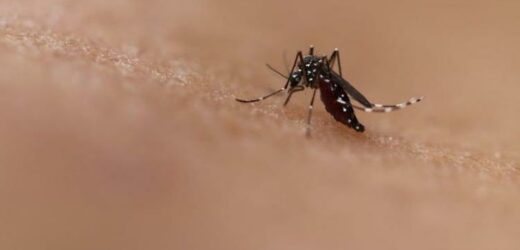Zika: CDC outline symptoms of the condition in 2018
We use your sign-up to provide content in ways you’ve consented to and to improve our understanding of you. This may include adverts from us and 3rd parties based on our understanding. You can unsubscribe at any time. More info
Cases of these viruses have all been reported, but recent advances in diagnostics have now improved the accuracy of testing. A study by the Mexican Institute of Social Security (MISS) has revealed that because of this, the current estimates of the incidence of arboviruses in Mexico may be underestimated. Chikungunya was first detected in Mexico in 2014, and the Zika virus in 2015.
But diagnostic techniques used by the National Network of Public Health Laboratories only focused on the detection of Dengue virus until 2017.
Before the new technique was used, the true incidence of the three arboviruses, as well as the incidence of coinfections, was unknown.
To find out whether incidences of Dengue, Chikungunya and Zika in endemic areas of Mexico, researchers undertook a cross-sectional study of 1,038 serum samples to confirm the diagnosis of viruses during the first three years of their co-circulation.
The team from MISS then reanalysed the serum samples using a test that could identify any of the three viruses in a single reaction.


They found 2.4 times the rate of arboviruses (viruses transmitted to humans via insects) as was originally recorded, including coinfections.
This showed to the researchers that there may have been an underestimation of the incidence of the three viruses.
But future research is needed to provide up-to-date incidence estimates of each virus.
The paper authors wrote: “The information generated in this study enriches the country with more precise epidemiological information on these arboviruses, which can help improve estimates of burden, morbidity and resource allocation.
“It will also provide information to design better diagnostic algorithms, given the possible scenario of new outbreaks or epidemics caused by these or other arboviruses that are currently circulating in the Americas”.
The study was published on December 2 in PLOS Neglected Tropical Diseases and by José Esteban Muñoz-Medina from MISS.

Mosquitoes in the UK do not spread these viruses.
Dengue is caught by people visiting or living in Asia, the Americas or the Caribbean.
Infection is normally mild and passes after about 1 week without causing any lasting problems.
But in rare cases, it can be very serious and potentially life-threatening.
Outbreaks of Chikungunya have occurred in countries in Africa, Asia, Europe, and the Indian and Pacific Oceans.
DON’T MISS
AstraZeneca breakthrough as ‘no evidence’ Omicron can escape vaccine [INSIGHT]
China war fears erupt as submarine snapped in Taiwan strait [REPORT]
Christmas party leaves 50 infected with suspected Omicron [REVEAL]


Symptoms can range from mild or non-existent to severe, but they can often be misdiagnosed as other viral illnesses like Dengue in areas where these infections also occur.
Outbreaks of Zika virus disease have been recorded in Africa, the Americas, Asia and the Pacific.
According to the Center for Disease Controls and Prevention (CDC), deaths are uncommon in Zika, but in very rare cases it can be fatal.
Since early 2015, a Zika virus outbreak has been spreading in the Americas.
Source: Read Full Article


